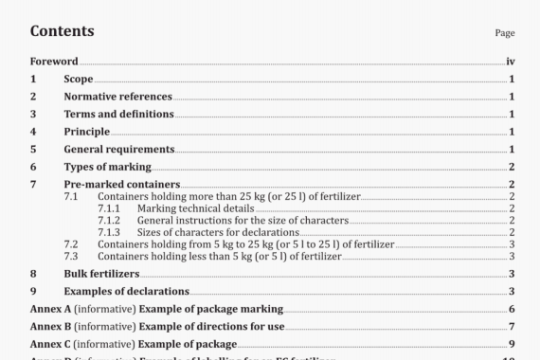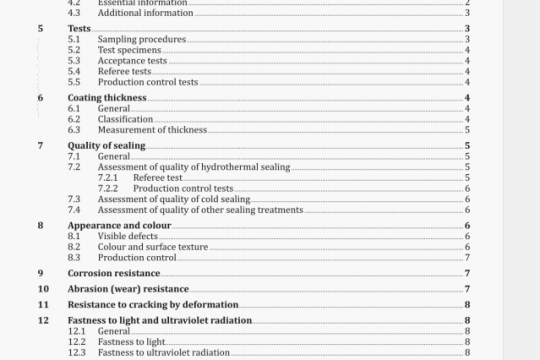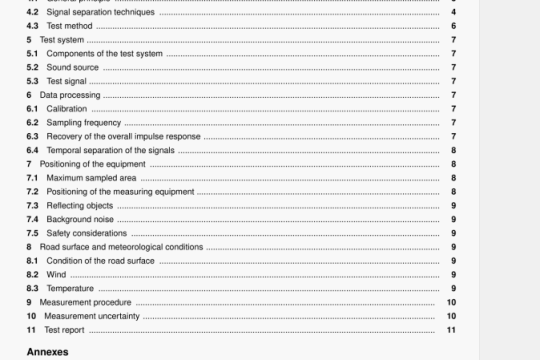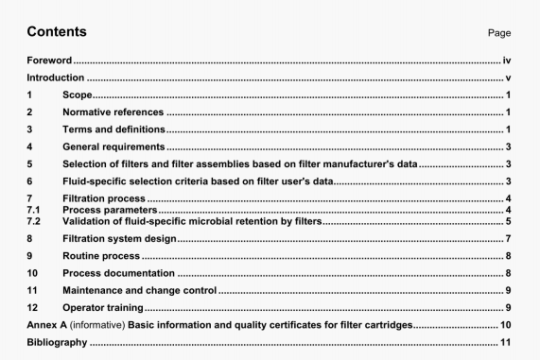ISO 6807:2003 pdf download
ISO 6807:2003 pdf download.Rubber hoses and hose assemblies for
rotary drilling and vibration applications一Specification.
8.3 Other hydrostatic pressure tests (hose assemblies)
Each hose assembly shall be tested to the appropriate working and proof pressure corresponding to the grade given in Table 1, using the method described in Annex A. When tested in accordance with Annex A, the hose assembly shall meet the following requirements:
a) At the appropriate working pressure, the assembly shall not twist by more than 3° per metre in any direction.
b) At the appropriate working pressure, the assembly shall not move in a lateral or vertical direction by more than a distance corresponding to one hose outside diameter.
c) At the appropriate working pressure, the hose assembly shall neither contract nor elongate by more than 2% of its original length.
d) At the appropriate proof pressure, there shall be no leaks. Evidence of dampness in the Fuller’s earth (hydrated magnesium-aluminium silicate) after the proof pressure is reduced to zero shall be a cause for re-certification and re-test. When re-testing again shows evidence of dampness in the Fuller’s earth, the assembly shall be rejected.
e) After the hydrostatic tests, the final length shall meet the requirements of 6.2.
8.4 Vacuum test (hose assemblies)
When tested in accordance with ISO 7233:1991, method B, over a period of 10 mm at — 0,8 bar, the hose lining shall show neither delamination nor blisters.
9 Marking
9.1 Hoses
The hoses shall be legibly and durably marked at both ends, and within 1 200 mm of the coupling, with at least the following information:
a) the manufacturer’s name or identification and a unique serial number;
b) the number of this International Standard;
c) the internal diameter, e.g. 63;
d) the grade letter, e.g. C;
e) the maximum working pressure, in bars, e.g. 276 bar;
f) the quarter and year of manufacture, e.g. 2Q03;
g) at the appropriate point, the words “Attach safety clamp here” (see Figure 1);
h) the longitudinal coloured lay line for the full length of the hose/assembly.
The markings shall be vulcanized into the cover with either an embossed or a distinctly coloured printed label.
EXAMPLE Man/XXXIISO 68071631C1276 bar/2Q03.
9.2 End fittings
The steel fittings, built-in or swaged, shall be marked with the fitting manufacturer’s trademark and a unique serial number, as well as the identification number of the heat of the steel.
This information shall be die-stamped on each fitting in a suitable place.
10 Storage
Guidance on the storage of hoses and hose assemblies is given in ISO 8331.
11 Design verification testing
Design verification testing shall be performed in order to supply evidence that all the material construction requirements and all the requirements of this International Standard have been met by the hose design and method of manufacture. For a given pressure rating, design verification tests shall be carried out a minimum of every five years, or whenever a change of manufacturer, design or material occurs, on the largest size of each design in the manufacturer’s range.
The requirement to repeat this test every five years can be avoided if the manufacturer can supply detailed proof of certification, with a full technical description of the hose materials, the hose-building specification (including attachment of couplings) and all test results, endorsed by an independent body, and can prove that hose assembly construction, materials and building specification are still identical to that for the assembly originally tested and qualified.
12 Frequency of testing
Design verification and routine tests are specified in Annex B, together with the required frequency of such tests.
Design verification tests are those tests required to confirm that the product meets all the requirements of this International Standard.
Routine tests are those tests required to be carried out on all hose assemblies prior to dispatch.
Production acceptance tests are those tests, specified in Annex C, which should preferably be carried out to
control the quality of manufacture. The frequencies specified in Annex C are given as a guide only.
13 Test report
For each assembly supplied by a manufacturer, a test report is required. This report shall include at least the following:
a) full identification of the assembly supplied, including the couplings;
b) the results of pressure testing (see A.1.9 and A.2.2), bend testing (see 8.1) (when applicable) and vacuum testing (see 8.4);
c) the date of design verification testing and the size and grade of hose assembly tested for this purpose.




